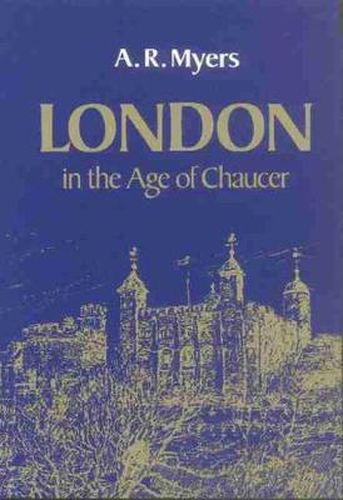Readings Newsletter
Become a Readings Member to make your shopping experience even easier.
Sign in or sign up for free!
You’re not far away from qualifying for FREE standard shipping within Australia
You’ve qualified for FREE standard shipping within Australia
The cart is loading…






Fourteenth-century London was noisy, dirty, and disorderly, but also prosperous, proud of itself, and full of life not yet dispersed to distant suburbs. It was described in 1326 as a
mirror to all England,
and indeed it was. Trade was growing and the guilds were making their influence felt. If justice was not tempered with mercy, at least the law courts were open to the citizens. Fine churches, palaces, guildhalls, and other buildings were constructed, and fire laws were enacted. Sanitation was a monstrous problem, and twice during the period the Black Death wreaked its havoc, but Londoners persevered.The author deals with London life in all its varied aspects during the time of Chaucer-customs, laws, social conditions, trade, and general conduct of the city government. London was the magnet of society and fashion, a city of pollution and violence, yet a city of wealth and churches. It was also still a city where a man knew his neighbors and often even lived in the same house with his employer.
As Chaucer walked the London streets, whether as a member of the royal household, as controller of the port of London, as clerk of the king’s works, or simply as a resident above Aldgate, he would have met plenty of people he knew. He may well have met the originals of the prioress or the wife of Bath, the merchant or the sergeant-at-law, the physician or the summoner, or the host himself, Harry Bailey. London had enough variety, importance, and cohesion to have encompassed them all.
$9.00 standard shipping within Australia
FREE standard shipping within Australia for orders over $100.00
Express & International shipping calculated at checkout
Fourteenth-century London was noisy, dirty, and disorderly, but also prosperous, proud of itself, and full of life not yet dispersed to distant suburbs. It was described in 1326 as a
mirror to all England,
and indeed it was. Trade was growing and the guilds were making their influence felt. If justice was not tempered with mercy, at least the law courts were open to the citizens. Fine churches, palaces, guildhalls, and other buildings were constructed, and fire laws were enacted. Sanitation was a monstrous problem, and twice during the period the Black Death wreaked its havoc, but Londoners persevered.The author deals with London life in all its varied aspects during the time of Chaucer-customs, laws, social conditions, trade, and general conduct of the city government. London was the magnet of society and fashion, a city of pollution and violence, yet a city of wealth and churches. It was also still a city where a man knew his neighbors and often even lived in the same house with his employer.
As Chaucer walked the London streets, whether as a member of the royal household, as controller of the port of London, as clerk of the king’s works, or simply as a resident above Aldgate, he would have met plenty of people he knew. He may well have met the originals of the prioress or the wife of Bath, the merchant or the sergeant-at-law, the physician or the summoner, or the host himself, Harry Bailey. London had enough variety, importance, and cohesion to have encompassed them all.